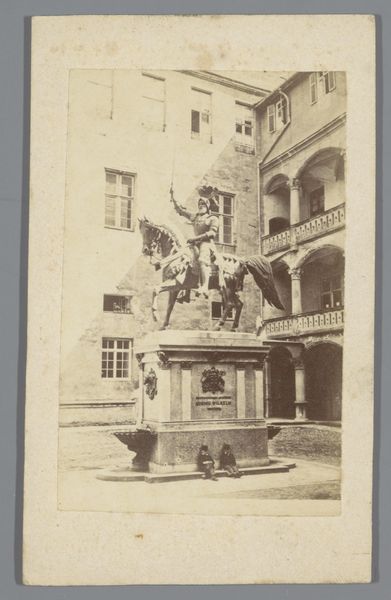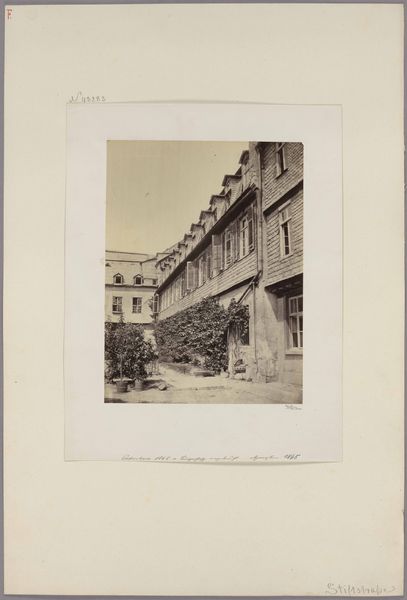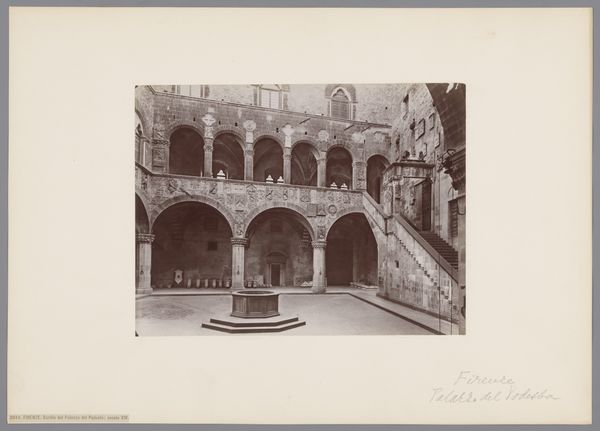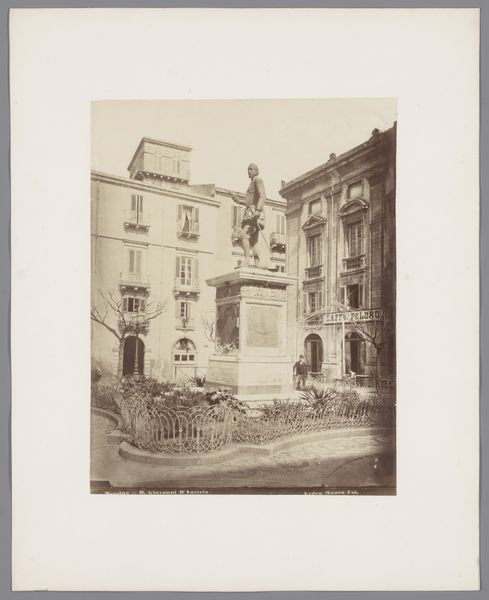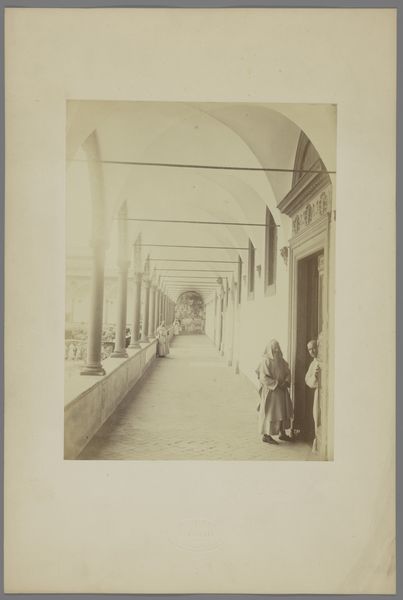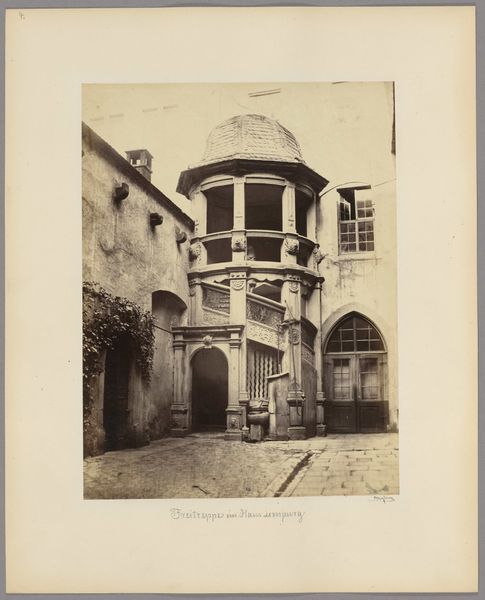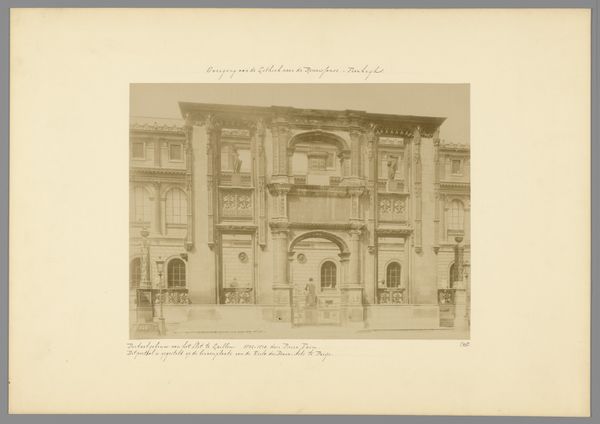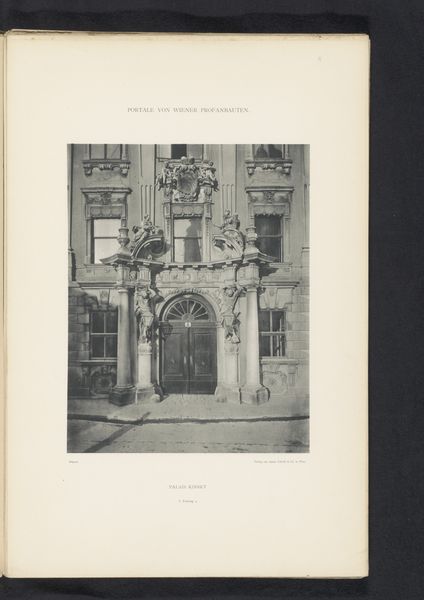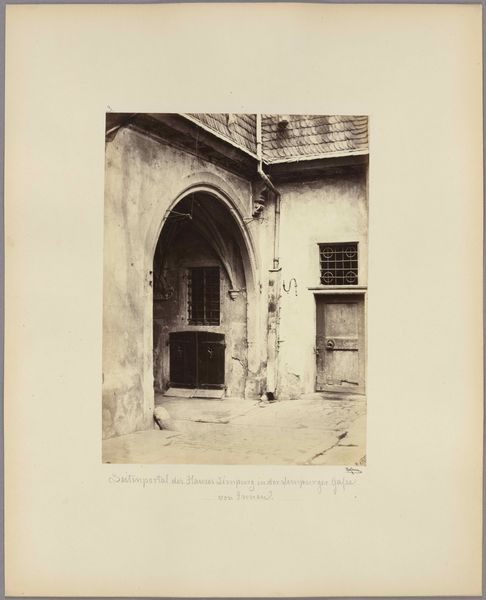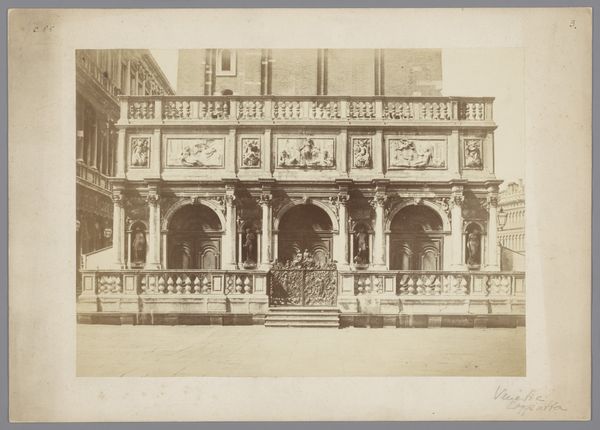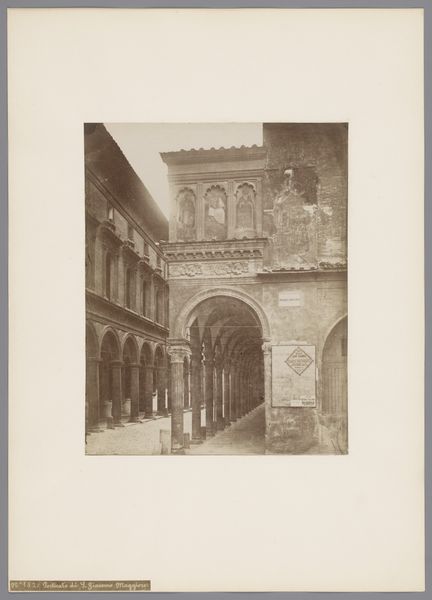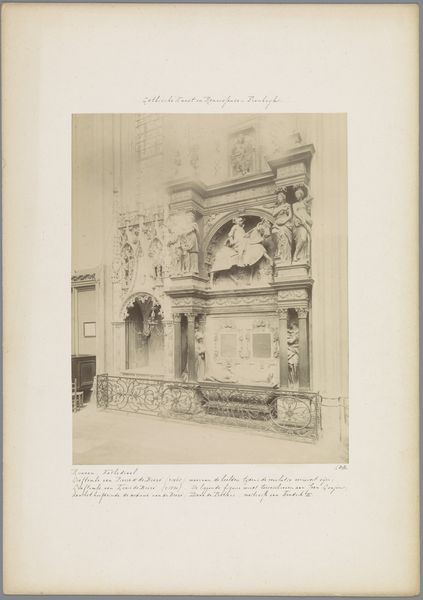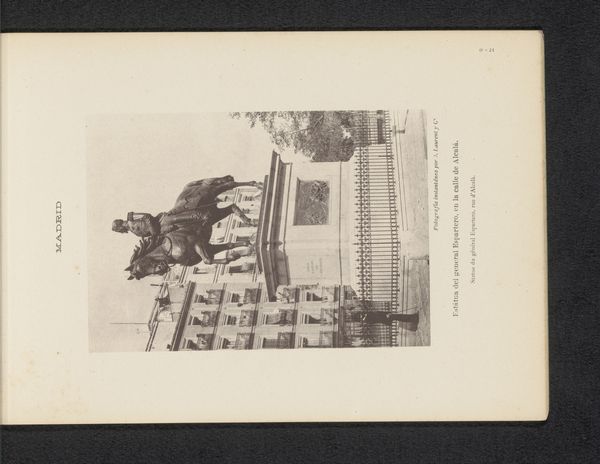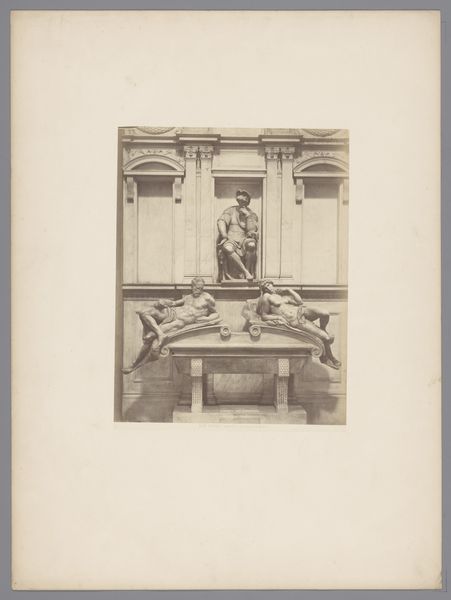
Binnenplaats van het Oude Kasteel te Stuttgart met een ruiterstandbeeld van graaf Eberhard I 1896
0:00
0:00
photography, sculpture, site-specific, gelatin-silver-print
#
portrait
#
16_19th-century
#
photography
#
sculpture
#
site-specific
#
gelatin-silver-print
#
cityscape
#
realism
Dimensions: height 263 mm, width 201 mm
Copyright: Rijks Museum: Open Domain
Editor: So, this is Hermann Brandseph's "Binnenplaats van het Oude Kasteel te Stuttgart met een ruiterstandbeeld van graaf Eberhard I," a gelatin-silver print from 1896. I'm struck by how… staged it feels, almost theatrical. What do you make of this photograph? Curator: "Theatrical" is a delicious word for it. It speaks volumes about how the late 19th century saw itself – grand, deliberate, posing for posterity. This image, it whispers tales of power frozen in time. Think of the rigid pose of the statue mirroring Brandseph's carefully constructed composition. What does the architectural setting evoke for you? Editor: Definitely a sense of history and importance. The arches, the columns... It feels like a stage for this equestrian statue. Like history is literally being put on display. Curator: Exactly! It’s not just about recording a scene, is it? It's about crafting a specific narrative. A noble leader, a timeless setting… I wonder if the stark lighting also adds to that feeling of timelessness? Does it amplify the sense of grandeur, do you think? Editor: Yeah, I think so. It really highlights the statue. Actually, do you know anything about why this statue was important back then, or even now? Curator: Now that's a good question! Beyond commemorating Count Eberhard I, I'd venture to guess it was probably used to shore up regional identity as Germany moved towards unification, or maybe some form of public memory work. In this photo the artist memorializes not only Eberhard but the whole *idea* of Swabian strength and endurance. See the clean, structured shot, not a stray animal, cart or pedestrian. And do you also notice how pristine everything appears? Editor: I do, yeah! Looking at it like that, it seems the scene wasn't a candid image of a sculpture in front of some city building. There was likely effort put into setting the perfect image. I definitely see that theatrical angle even more now. Curator: Right? Brandseph used photography not just to capture reality, but to sculpt and shape perception, transforming a city square into a stage for a national story, ever present even today. And on film! Editor: I'll definitely carry a deeper awareness the next time I see old public statues.
Comments
No comments
Be the first to comment and join the conversation on the ultimate creative platform.
